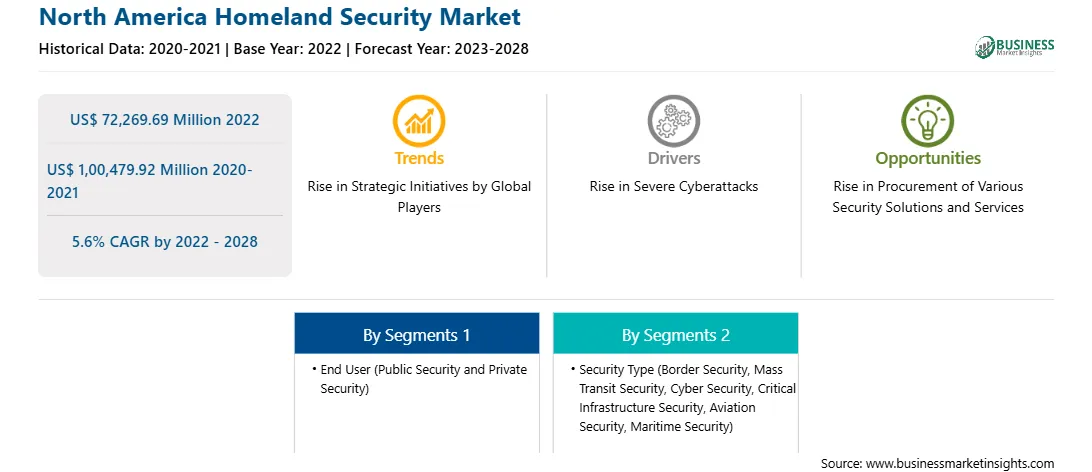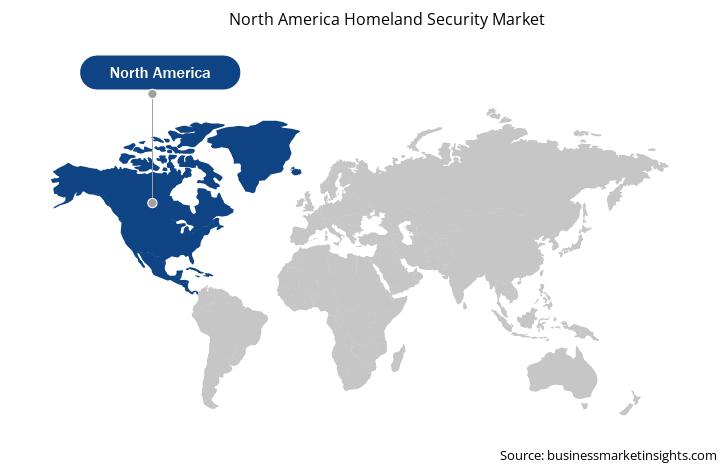Rise in Severe Cyberattacks
Several nations have experienced a rise in cyber-attacks over the years. The adoption of digitalization across all industries and commercial sectors across the region has resulted in organizations adopting cloud storage solutions, which have led to the easy availability of important business documents on the internet. This has influenced the rise in cyber-attacks across the region. Some of the recent cyber-attacks that led to huge losses faced by organizations are listed below:
• In May 2021, the colonial pipeline, which is the largest fuel pipeline in the US, faced a cyber-attack that disrupted fuel supplies to 12 US states for several days. This attack made the company shut down its entire operations for damage control and to stop further severity.
• In March 2021, REvil hacking group hacked the network system of Acer using a technical glitch of their Microsoft exchange server, thereby hacking more than 30,000 commercial and government emails across the US. The group hacked the server for ransomware for US$ 50 million. Important information such as bank balances, bank communications, and financial spreadsheets was also leaked due to the cyber-attack.
• In March 2021, CNA, a US-based insurance company, faced a cyber-attack that led to the temporary closure of trading. The attack affected important information such as Social Security numbers and health benefits information of over 15,000 devices.
The rise in cyberattacks is putting various important documents of private and public enterprises at risk. The loss of such information to illegal hacking groups is imposing severe losses on the enterprises and impacting the nations' economies. Thus, the rise in cyber-attacks across the region is influencing both public and private sectors to invest in the integration of advanced cyber security solutions. These factors are thereby driving the North America homeland security market.
Market Overview
The US, Canada, and Mexico are the key contributors to the homeland security market in the North America. North America has common dangers, particularly to critical infrastructure and the financial sector, as well as common opportunities, such as public-private collaborations to build a more robust cyber landscape. Sharing best practices on a trilateral basis allows each country to improve cyber security both at home and across the continent. This policy brief examines the approaches taken by the three North American governments in dealing with cyber threats to financial transactions and critical infrastructure, as well as how some of those approaches create opportunities for trilateral cooperation to strengthen continental security in this new and evolving realm. For instance, in August 2021, the US government enlisted the assistance of three tech behemoths—Microsoft, Amazon, and Alphabet—to strengthen its cyber security and combat ransomware. The corporation is one of three IT behemoths chosen for the Joint Defense Cyber Collaborative, a program aimed at countering ransomware and cyberattacks on cloud computing platforms. The program is overseen by the Cyber Security and Information Security Agency (CISA). Department of Homeland Security (DHS), one of the leading homeland security agencies in the world, protects Americans from threats on land, sea, air, and cyberspace on an ongoing and continuous basis throughout the year. The DHS prioritizes smart, innovative, and effective programs to prevent terrorism, promote cyber security, secure borders, enforce immigration laws in the US, and lead the Federal Government's coordinated and comprehensive response to major disasters and other large-scale emergencies. Increased funding is included in the budget for border security; immigration enforcement; cyber security; disaster recovery, response, and preparedness; key marine and aviation assets; and front-line troops. The budget would enable the department to respond to new and emerging dangers and challenges to defend the American people, the nation, and the American economy. Further, Customs and Border Protection (CBP) is building a worldwide network that is informed, agile, and seamless to increase border security operations while facilitating the legitimate movement of people and products. This network's capabilities must be constantly improved and evolved to serve CBP's Enduring Mission Priorities—counterterrorism, combat transnational crime, border security, lawful trade and revenue protection, and lawful travel. CBP is responsible for preventing the illicit movement of people and contraband along 5,000 miles of border with Canada, 1,900 miles of border with Mexico, and over 95,000 miles of shoreline. Agents from the United States Border Patrol (USBP) and Air and Marine Operations (AMO) patrol the nation's land, maritime, and airspace borders to prevent the illegal entrance of people and goods. For instance, in May 2022, the Department of Homeland Security (DHS) Science & Technology Directorate (S&T) awarded a five-year indefinite delivery, indefinite quantity (IDIQ) contract to the RAND Corporation (RAND) for the continued operation of the Homeland Security Operational Analysis Center (HSOAC). The contract will continue till March 2027 with a maximum order limitation of US$ 495 million. The studies and analysis will be provided by the Federally Funded Research and Development Center (FFRDC). These agencies are further expected to bolster the growth of the North American homeland security market during the forecast period.

Strategic insights for the North America Homeland Security provides data-driven analysis of the industry landscape, including current trends, key players, and regional nuances. These insights offer actionable recommendations, enabling readers to differentiate themselves from competitors by identifying untapped segments or developing unique value propositions. Leveraging data analytics, these insights help industry players anticipate the market shifts, whether investors, manufacturers, or other stakeholders. A future-oriented perspective is essential, helping stakeholders anticipate market shifts and position themselves for long-term success in this dynamic region. Ultimately, effective strategic insights empower readers to make informed decisions that drive profitability and achieve their business objectives within the market.

| Report Attribute | Details |
|---|---|
| Market size in 2022 | US$ 72,269.69 Million |
| Market Size by 2028 | US$ 1,00,479.92 Million |
| Global CAGR (2022 - 2028) | 5.6% |
| Historical Data | 2020-2021 |
| Forecast period | 2023-2028 |
| Segments Covered |
By End User
|
| Regions and Countries Covered | North America
|
| Market leaders and key company profiles |
The geographic scope of the North America Homeland Security refers to the specific areas in which a business operates and competes. Understanding local distinctions, such as diverse consumer preferences (e.g., demand for specific plug types or battery backup durations), varying economic conditions, and regulatory environments, is crucial for tailoring strategies to specific markets. Businesses can expand their reach by identifying underserved areas or adapting their offerings to meet local demands. A clear market focus allows for more effective resource allocation, targeted marketing campaigns, and better positioning against local competitors, ultimately driving growth in those targeted areas.

North America Homeland Security Market Segmentation
The North America homeland security market is segmented into end user, security type, and country.
Based on end user, the market is bifurcated into public security and private security. The public security segment registered the larger market share in 2022.
Based on security type, the market is segmented into border security, mass transit security, cyber security, critical infrastructure security, aviation security, maritime security, and others. The cyber security segment held the largest market share in 2022.
Based on country, the market is segmented into the US, Canada, and Mexico. The US dominated the market share in 2022.
Elbit Systems Ltd; IBM Corporation; Lockheed Martin Corporation; Leidos; Thales Group; Teledyne FLIR LLC; Northrop Grumman Corporation; Raytheon Technologies Corporation; Textron Systems; and General Dynamic Information Technology, Inc. are the leading companies operating in the homeland security market in the region.
The North America Homeland Security Market is valued at US$ 72,269.69 Million in 2022, it is projected to reach US$ 1,00,479.92 Million by 2028.
As per our report North America Homeland Security Market, the market size is valued at US$ 72,269.69 Million in 2022, projecting it to reach US$ 1,00,479.92 Million by 2028. This translates to a CAGR of approximately 5.6% during the forecast period.
The North America Homeland Security Market report typically cover these key segments-
The historic period, base year, and forecast period can vary slightly depending on the specific market research report. However, for the North America Homeland Security Market report:
The North America Homeland Security Market is populated by several key players, each contributing to its growth and innovation. Some of the major players include:
The North America Homeland Security Market report is valuable for diverse stakeholders, including:
Essentially, anyone involved in or considering involvement in the North America Homeland Security Market value chain can benefit from the information contained in a comprehensive market report.